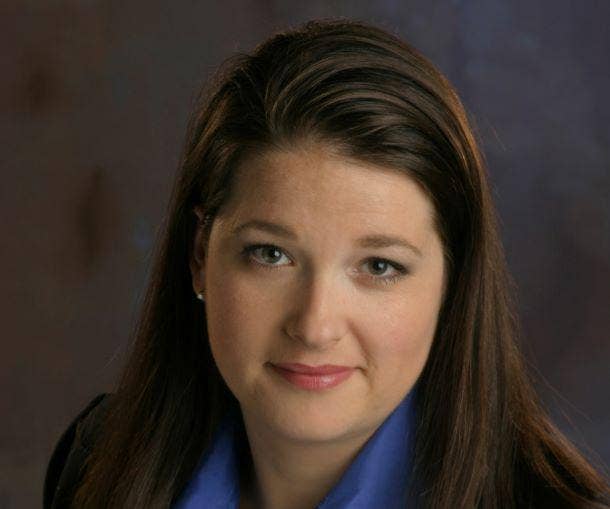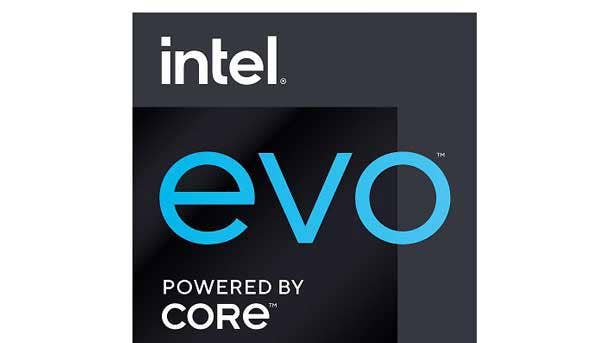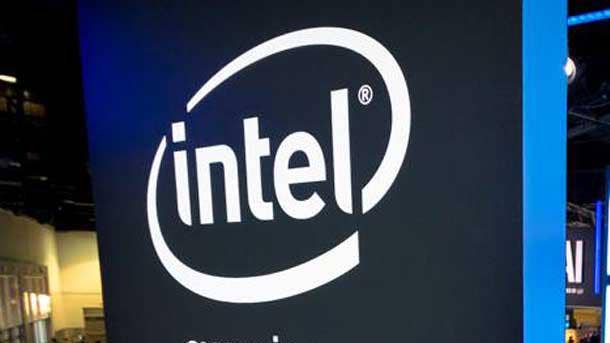6 Things To Know About Intel’s New PC Leader, Michelle Holthaus
As the head of Intel’s Client Computing Group, Michelle Johnston Holthaus will be responsible for all aspects of the business, including strategy, financial performance and product development for CCG’s entire portfolio of products and platforms.

The Client Computing Group’s New General Manager
Intel’s PC business is getting a major leadership shakeup with the announcement that top sales executive Michelle Johnston Holthaus will take the mantle from 30-year company veteran Gregory Bryant, who is leaving the chipmaker for a “new opportunity” in the tech industry.
The Santa Clara, Calif.-based company paired the Monday announcement with news that Micron Technology executive David Zinsner will succeed George S. Davis as Intel’s new CFO later this month.
[Related: Intel Reorganization: 8 Big Changes Made Under Pat Gelsinger ]
The job change will make Holthaus executive vice president and general manager of the Client Computing Group (CCG), which sells processors and other components for laptops and desktop PCs.
A 25-year Intel veteran, Holthaus has been general manager of Intel’s Sales, Marketing and Communications Group since 2017. Intel said she will transition to her new role in CCG “over the coming months” as the company searches for her replacement. She will continue to report to Intel CEO Pat Gelsinger, who she has reported to since Gelsinger rejoined Intel last year.
These are six things you should know about Holthaus, including her new CCG responsibilities, how she has made channel partners a higher priority for Intel, what changes she enacted as Intel’s top sales executive and how her new CCG appointment fits within broader changes enacted by Gelsinger.

Holthaus’ Responsibilities And The CCG Business
As head of CCG, Holthaus will be responsible for all aspects of the business, including strategy, financial performance and product development for CCG’s entire portfolio of products and platforms.
CCG’s portfolio includes Intel’s Core CPUs for desktop PCs and laptops as well as components and technologies for Wi-Fi, Ethernet and Thunderbolt. It also includes the vPro platform, which enables enterprise-grade features in Intel processors, as well as Intel’s white-label NUC platform for laptops and small form factor desktops that are sold by channel partners.
An increasingly important element of CCG is Intel Evo, a program launched in 2020 that provides engineering and marketing resources to OEMs for premium laptops that meet a minimum of key experience indicators and specifications defined by Intel. The chipmaker said at CES 2022 that it expects more than 100 Intel Evo-verified laptop designs to ship this year.
CCG has been Intel’s largest business for decades. Last year, the business unit brought in 51 percent of the chipmaker’s total revenue of $77.9 billion in 2020. In the company’s third quarter of 2021, CCG’s revenue declined 2 percent year-over-year to $9.7 billion, reversing quarters of growth.
Holthaus won’t take the reins of CCG until Intel identifies a new leader for the company’s Sales, Marketing and Communications Group. During the CCG leadership transition, Jim Johnson, senior vice president and general manager of Client Platforms Engineering, will serve as the business unit’s interim leader, according to an internal memo sent by Gelsinger that was seen by CRN.

Holthaus’ 25-Year History At Intel
Before the CCG appointment, Holthaus’ full title was executive vice president, chief revenue officer and general manager of the Sales, Marketing and Communications Group.
Prior to that, she was senior vice president of Sales and Marketing from 2017-2019, before Intel’s communications team was consolidated under her organization. She also served as acting chief marketing officer at that time while the company was looking to fill the role permanently.
Her previous role was corporate vice president of sales and marketing for Intel’s Client Components Group from 2016-1017. Before that, she was a vice president in charge of Intel’s relationship with Microsoft from 2013-2017, according to her LinkedIn profile.
For several years in her time at Intel, Holthaus spent a significant chunk working in channel leadership roles. This included her time as general manager of channel for Central Marketing and Operations, where she led marketing for CCG in the channel. It also included her time as general manager of the Channel Mobile Product Group and Channel Desktop Products Group.
Holthaus got her start at Intel 25 years ago as a program manager in the OEM Platform Solutions Division in Hillsboro, Oregon, according to her biography on Intel’s website. Before that, she graduated from Linfield College in Oregon with a Bachelor’s in finance and financial management services.

Holthaus Made Channel Partners A Higher Priority
As the head of Intel’s Sales, Marketing and Communications Group, Holthaus said she made the chipmaker’s relationship with channel partners a higher priority when she appointed John Kalvin (pictured) as the new global channel chief at the end of 2020.
Holthaus said she did this by having Kalvin report directly to her when she named him vice president and general manager of global scale and partners, a change in the reporting structure that was in place for previous global channel chiefs, Holthaus told CRN in an interview last year.
This meant that with Kalvin in charge of channel partner relationships, partners would have more equal footing with Intel’s largest customers, Holthaus said. Intel’s previous global channel chief, Greg Baur, reported to Shannon Poulin, who in turn reported to Holthaus as corporate vice president and general manager of global markets and partners in previous years.
“One of the reasons I put John Kalvin on my staff was, I have a lot of large customers obviously and they have a voice at the table every day, but I really felt like our channel partners needed a voice at the table every single day,” she told CRN.
Prior to the change, Holthaus said, supply chain issues and challenges created by the COVID-19 pandemic led her to want a better pulse on the thoughts and needs of channel partners.
“I just found that I was constantly asking, like, ‘Hey, what does the channel need? What do these partners need? What do our cloud partners need?’ And I felt like we just needed somebody who could sit on staff who could constantly remind us,” she said.
As head of the Sales, Marketing and Communications Group, Holthaus said she held direct conversations with channel partner executives on Intel’s Channel Board of Advisors every quarter.
“This is a very important group. We learned so much from our channel partners and our Board of Advisors, and they inspire us to do things that we may not have thought about,” she said.
When Gelsinger was appointed CEO of Intel, Holthaus said she implored Gelsinger to keep a close connection with the company’s channel partners.
“I said to Pat, ‘My challenge for you is, you need to be at every major channel event and partner event that we have. You need to be meeting with them on a quarterly basis, and you just need to be engaged,’” Holthaus said, recalling a conversation with Gelsinger.

Holthaus Has Been Champion Of New ‘One Intel’ Approach To Partners
Before Gelsinger was appointed CEO of Intel in early 2021, Holthaus vowed that the chipmaker would take a “one Intel” approach that would make it easier for channel partners to work with the chipmaker.
Holthaus made the vow in a keynote at the virtual Intel Partner Connect conference in October 2020, a month after the company revealed a major rebrand in conjunction with its 11th-generation Core processor launch that impacted all of the chipmaker’s brands.
“We’re going to focus a lot on aligning our road map with our marketing plans with the goal of increasing the value and making that one-punch market impact,” she said at the time. “So when you see the new brand or you see us talking about that, you have a product that goes along with it that you can immediately go out and talk to your customers about.”
Holthaus said the Intel Partner Alliance program, which launched at the beginning of 2021 and consolidated multiple partner programs, was an important aspect of the “one Intel” approach.
At Intel Partner Connect in April 2021, Kalvin, Intel’s global channel chief, said the company was working to make sure partners “get the full weight and capability that exists around the company.”
“We have extraordinary capabilities across this incredibly huge company,” he said. “There’s lots of different partner motions or things that are happening across the company. I want to increasingly bring those into alignment so that we bring the full weight and capability of this awesome company to help our partners do [job] No. 1, which is help them grow.”

Nearly All Business Unit Leaders Have Now Been Picked By Gelsinger
With the appointment of Holthaus as CCG’s new leader, the move means that Gelsinger has handpicked nearly all the leaders of the company’s business units.
Prior to the CCG leadership change, Gelsinger appointed new leaders for Intel’s businesses around data center, networking and edge computing, software and accelerated computing that were formed as part of a major reorganization that happened last summer.
As part of the reorganization, Intel ousted Navin Shenoy, the leader of the Data Platform Group that included the company’s data center business. That business was then folded into the new Datacenter and AI Group business unit. Gelsinger appointed Sandra Rivera, who was previously Intel’s chief people officer and led the Network Platforms Group before that, as the group’s general manager.
Gelsinger chose Nick McKeown to lead Intel’s new Network and Edge Group. McKeown, a Stanford University professor, was previously a part-time fellow at Intel as well as co-founder, chairman and chief scientist at Barefoot Networks, which Intel acquired in 2019. In an interview with CRN last year, Gelsinger said McKeown is a neighbor and that he “kept cajoling” McKeown into taking the job when they took “long walks in the woods together.”
Gelsinger appointed Greg Lavender, who he previously named CTO at VMware during Gelsinger’s tenure there, to become Intel’s new CTO and head of the new Software and Advanced Technology Group. The division consolidated many of the company’s software teams.
Raja Koduri, who was already leading Intel’s GPU and accelerated computing efforts, was chosen to lead the new Accelerated Computing Systems and Graphics Group. Gelsinger formed the group as a business unit as the company started to commercialize its discrete GPU products.
Prior to the summer 2021 reorganization, Gelsinger formed the new Intel Foundry Services business unit in March 2021 as part of the company’s ambition to manufacture chips for other companies. When the new business unit was announced, Gelsinger named Randhir Thakur, the company’s chief supply chain officer, as president of Intel Foundry Services.
This means that the only business unit leader who wasn’t appointed by Gelsinger is Amnon Shashua, co-founder and CEO of Mobileye, the autonomous driving and advanced driver assistance system business that Intel acquired in 2017. Intel announced in December that it plans to spin out Mobileye as a publicly traded company. When that happens, all of Intel’s business unit leaders will be Gelsinger appointees.
Outside of the business units, Gelsinger has made other appointments to Intel’s executive management team: Rui Wang as head of Intel China and Christy Pambianchi as chief people officer.

Holthaus Enacted Multiple Changes In Sales Org Last Year
Two months before Intel announced Holthaus as Intel’s new CCG boss, Holthaus carried out a reorganization of the Sales, Marketing and Communications Group and reinstated regional sales leaders for the Americas; Asia-Pacific and Japan (APJ); and Europe, Middle East and Africa (EMEA) regions.
“I am optimistic that the org changes will enable faster decision-making, particularly at the edge,” Holthaus wrote in a Nov. 9, 2021, memo to employees that was seen by CRN. “It will undoubtedly strengthen regional leadership and increase customer obsession. Our solutions-focused approach will be ‘outside in’, and we are investing in you and the seller experience.”
As part of the reorganization for Intel’s Sales, Marketing and Communications Group, Holthaus said the naming of new leaders for the Americas, APJ and EMEA represented a strengthening of Intel’s regional sales model after the company named Rui Wang head of Intel China last September.
“The regional leadership teams will be fully empowered, working closely with customers, with a stronger pulse on trends, driving growth and local opportunities for the company,” Holthaus said in the memo.
The Americas team is led Greg Ernst, who was most recently vice president of the Sales and Marketing Group and general manager of U.S. sales. The APJ team is led by Steve Long, who was most recently global vice president of client computing sales. In a subsequent Dec. 8, 2021, memo, Holthaus announced Adrian Criddle, Intel’s head of global field marketing, as the interim leader of EMEA sales.
In the Nov. 9 memo, Holthaus also announced the formation of a Global Strategic Accounts team that would focus on Dell, HP, Lenovo, Amazon, Microsoft, Google and Qualcomm. She said Ryan McCurdy, who previously managed Intel’s relationship with Dell, would lead the team.
The reorganization, which took effect on Jan. 1, came after the Holthaus formed the new Corporate Planning Group under her sales organization over the summer of 2021. The move consolidated the company’s Business Management Group, Global External Manufacturing and Sourcing Group and long-range planning resources. She appointed Stuart Pann, a 33-year Intel veteran who left in 2014 and was once HP Inc.’s chief supply chain officer, as head of the Corporate Planning Group.
“By combining these important functions into one team, we will accelerate the success of IDM 2.0 and enable business priorities across internal manufacturing, external manufacturing, and support all our customers for growth and success,” Holthaus said in a June 3 memo, referring to Intel’s new hybrid manufacturing strategy that represents an evolution of its integrated device manufacturing model.